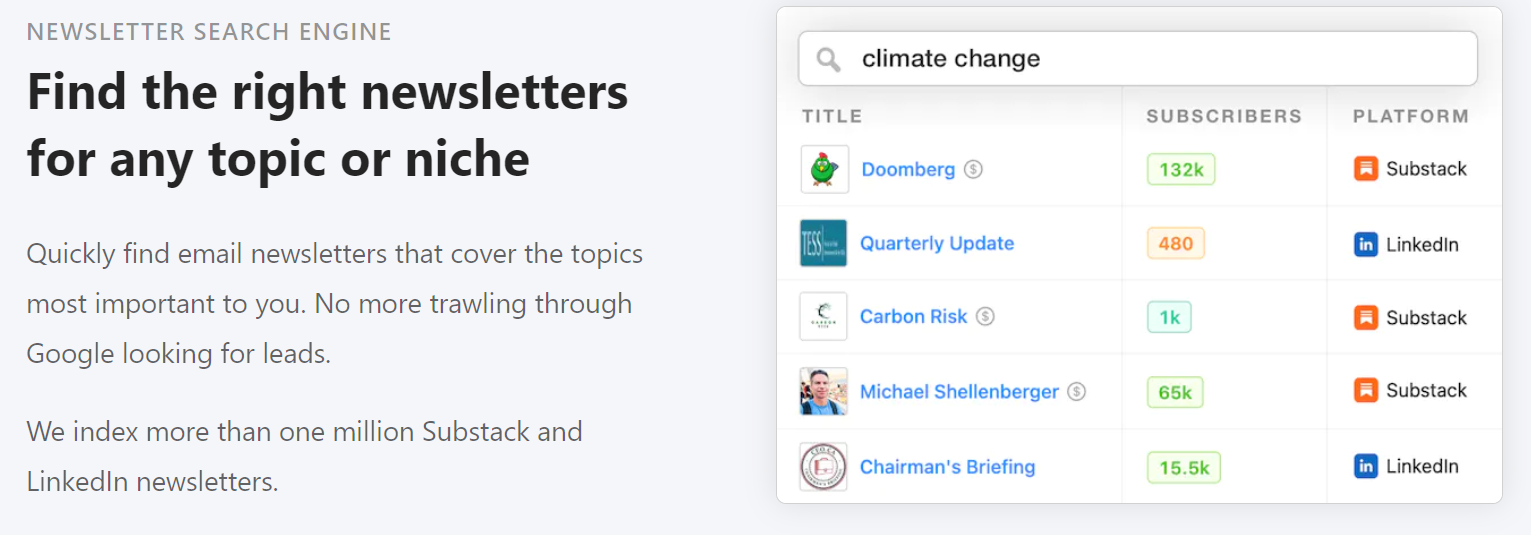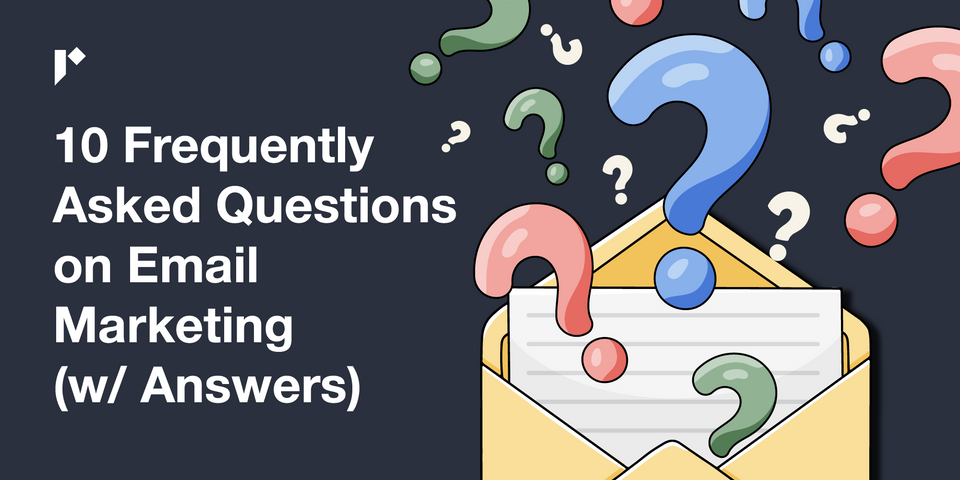Email marketing is one of those strategies that, done well, can introduce potential customers, increase subscribers, drive repeat customers and cement loyalty to your brand.
Undoubtedly, you've been on the receiving end of some amazing and a few terrible email campaigns yourself.
So how do you smash your digital marketing goals in 2023? Let's answer ten of your most most common email marketing questions.
Table of Contents
- What is email marketing?
- How effective is email marketing in 2023?
- What is the difference between email marketing and email advertising?
- How do I build an email list?
- What's a good open rate?
- How do I know if email marketing is working?
- What makes a good subject line?
- What should I include in my email content?
- How often should I send marketing emails?
- How do I stop people from unsubscribing?
- Final thoughts
What is email marketing?
Email marketers send regular commercial emails designed to build relationships with existing customers, generate new leads and eventually increase sales of products or services.
These marketing emails are sent via specialized Email Service Providers (ESPs) such as ConvertKit, MailerLite, AWeber and Sendinblue. ESPs can send large batches of emails and are optimized to reduce the chances of your email message ending up in a spam folder.
They safely store your subscriber list and provide email templates, email marketing tools and advice. ESPs usually include analytics to monitor email marketing campaigns individually and over time.
It's vital to know what the law requires and to be aware of other countries privacy laws if you send emails internationally. Examples of these regulations include GDPR (Europe) and CAN-SPAM (US). Breaking the rules can mean your emails are blocked or reported as spam. Flagrant breaches can result in a hefty fine.
Best email marketing tactics and practices include:
- Only send marketing emails to people who've agreed to receive them by signing up to your email list through your opt-in page.
- Have an easy way to unsubscribe.
- Allow people to see the data you hold about them.
- Include your company name and valid address in every email.

How effective is email marketing in 2023?
It's estimated that, on average, email marketing ROI can be up to $40 for every $1 spent on email campaigns. And according to the CMI's 2023 report, 69% of B2B marketers use newsletters, and 67% also send other email messages as part of their email marketing efforts.
Meanwhile, Statista's 2022 global email marketing revenue analysis shows that email marketing generated 9.62 billion US dollars in 2022, predicted to rise to some 15 billion US by 2026. That's partly because we send 332 billion daily emails.
But it's also because effective HTML emails include personalized messaging, relevant content, an attractive format, engaging email subject lines and a targeted call to action.
To run an effective and efficient email marketing campaign, start by understanding what you hope to achieve in future campaigns and the type of emails that best suit those goals.
Some emails will drive traffic to your website and increase sales. Others focus on building brand awareness and gaining new leads or subscribers. Some work on customer engagement, building loyalty and trust through frequent emails, regular newsletters, customer discount offers etc. You don't have to figure this out yourself, though. You could employ a company that provides email marketing services and have them do all the hard work.
What is the difference between email marketing and email advertising?
Many people get confused between email marketing and email advertising, and you'll often see the terms intertwined when you search for definitions.
Email marketing focuses your marketing efforts on nurturing relationships with your customer base via email. It involves a long-term commitment to serving your audience rather than going for a quick sale. To do email marketing you need to have a list of email addresses to send content to, so you first need to build this list.
Email advertising is a great tactic if you don't have a list of email addresses to send emails to. It involves getting featured in emails that other individuals or brands send to their mailing list. Also known as newsletter advertising, it can be an integral part of your marketing strategy.
We built Reletter, a newsletter search engine and database dedicated to helping everyone who wants to get featured in other newsletters as part of their marketing and brand strategy.
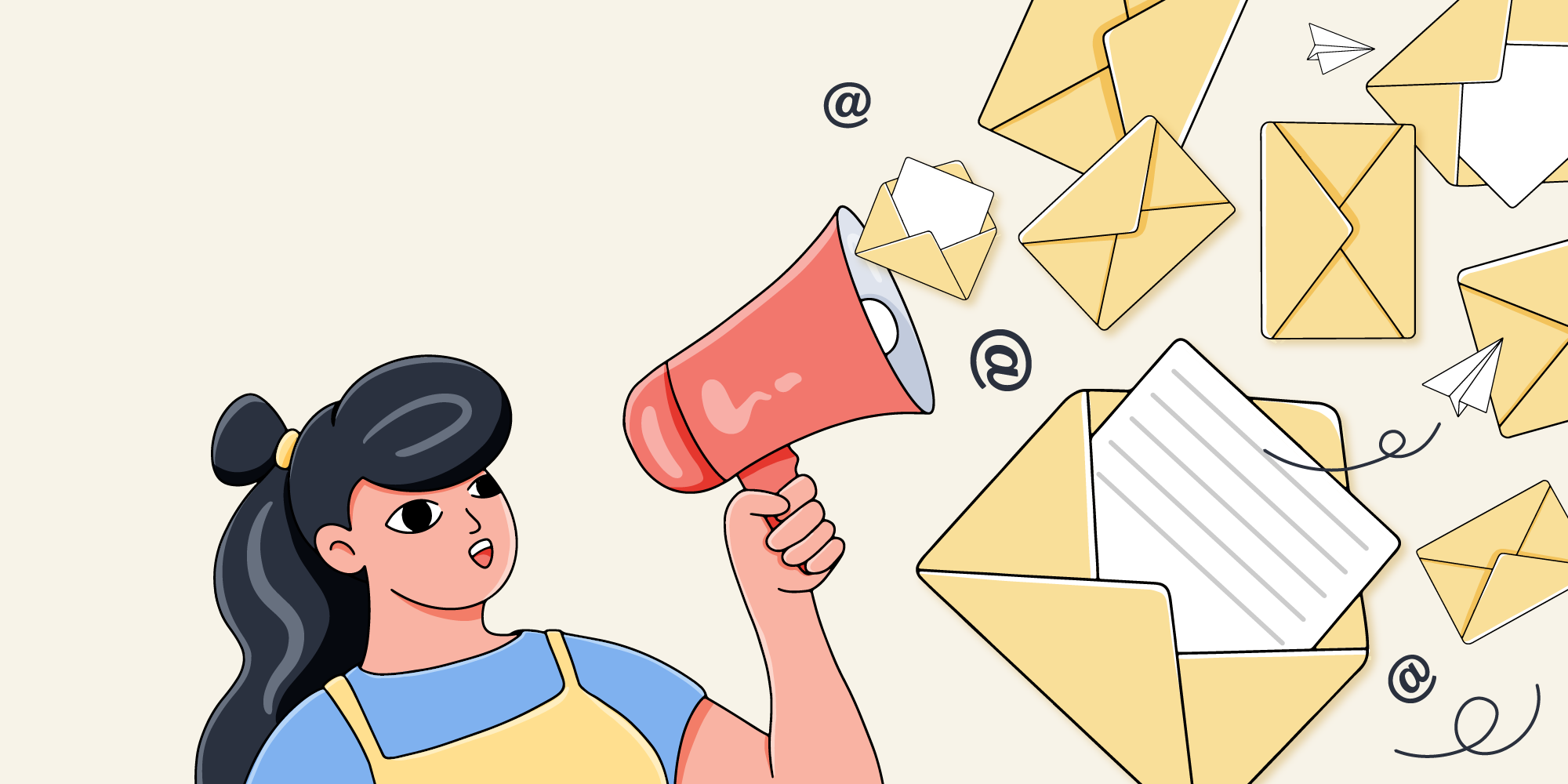
How do I build an email list?
Start by knowing what your audience wants.
Understanding your audience and customers is crucial to building a successful email list. You should know your audience demographics, their pain points and the language they use to describe them.
Create offers your customers are interested in.
Send emails that reflect a specific audience and their pain points and offer solutions. These may include information and knowledge, helpful hints, exclusive bargains, free courses or downloads, coupons and discounts.
Conventional email marketing wisdom advocates using a lead magnet. (I.e., giving something useful in return for an email address.) Lead magnets can attract your target audience but may also lead to sign-ups who only want the freebie.
More recently, many people have stopped gating their content, discovering they're more likely to build email lists of superfans who will open all your emails.
Advertise in other people's content
Sponsoring or advertising in podcasts or newsletters created by other people who serve a similar audience often brings a rush of new subscribers to your list. (This article on The Biggest Email Trend to Watch in 2023 explains why.)
Segment your list right from the start to make personalizing it easier
Most ESPs help you segment subscribers into sub-groups based on their interests, buying habits, purchase history, geographical location, skill level (e.g., beginner, advanced) etc. Segmenting lets you send tailored emails to one particular audience and not bother those who won't be interested.
What's a good open rate?
In 2022, MailerLite analyzed the open rate data from the email marketing campaigns of 40,000 customers. Although open rates vary between different industries, the overall average came in at 37.65%.
Meanwhile, the email and digital marketing and software company Constant Contact measured the average open rate across all industries as 33.02% as of March 2023.
ConvertKit explains, "Open rate is calculated by dividing the subscribers who opened your email by the number of subscribers who received the email. So the open rate is calculated by the (total of unique opens ÷ total number of recipients) x 100.
ConvertKit reckons a good open rate lies between 26% – 35%, while anything above 36% can be considered very high.
How do I know if email marketing is working?
Measure your key performance indicators (KPI) based on your marketing goals. KPIs may include your email's open rates, click-through rates (CTR), unsubscribe rates, website visits, sales or sign-ups.
The formula for CTR is (clicks ÷ delivered emails) x 100. I.e., the number of clicks on your link divided by the number of times it's sent. For example, five clicks over 100 successfully delivered emails is a CTR of 5%. CTR may supersede open rates as a measure of success in the future because Apple's privacy policy means ESPs don't know whether an email is opened or not.
Unsubscribe rates show how many people leave your list after receiving an email; the average can be as high as 2%. The formula is (unsubscribes ÷ delivered emails) x 100.
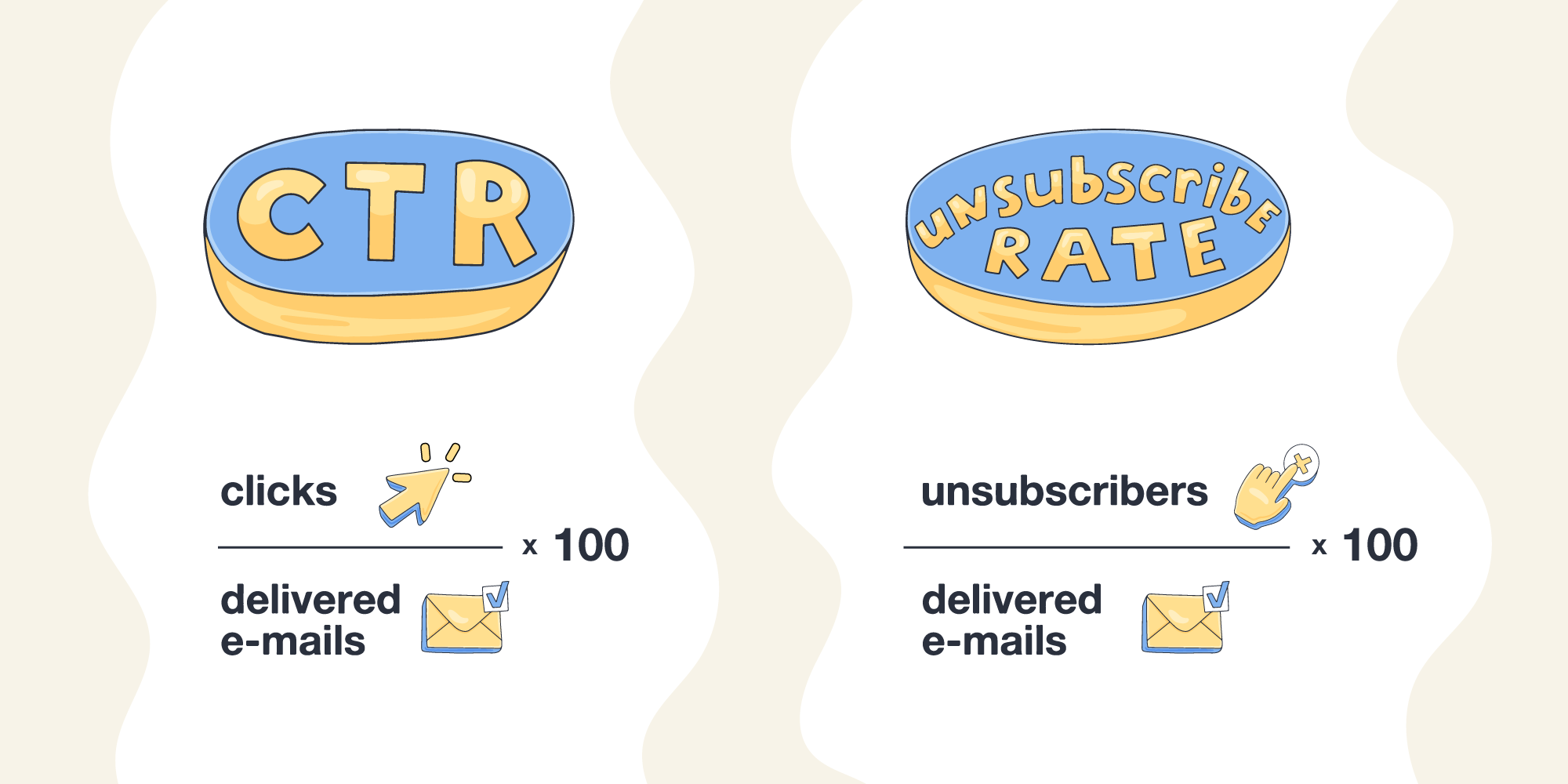
What makes a good subject line?
"In email and social media marketing, the subject line is the make-or-break element. If it doesn't pique interest, it's not going to get opened." - Gini Dietrich, Spin Sucks Newsletter.
High-converting subject lines:
- Convey a sense of urgency, intrigue or fun, making the recipient curious to learn more.
- Use the recipient's name.
- Clearly state the email's purpose.
- Do not use clickbait.
- Often include numbers or social proof.
Don't ignore the preheader
Preheaders are the lines of text under the subject line. Use them to amplify the subject line and further entice people to open your email.
Examples: Subject line—Preheader
Your special invite to our free LIVE workshop series—the perfect way to earn recurring income.
You spend a lot of time creating content, but...—are you sure it aligns with what you want to happen?
Harnessing the force: Lessons from Star Wars to elevate your blogging—May the 4th be with you...

What should I include in my email content?
Marketing emails can include:
- Welcome emails
- Newsletters
- Promotions, sales and discounts emails
- Special announcements, e.g., new store openings, featured staff members, community PR
- Content updates on your latest podcast, blog post, video or social media posts
How often should I send marketing emails?
There's no set frequency or magic number—it depends on your business, products, industry and the types of email you send.
Some examples:
GoldPine (commercial wood products) twice-weekly deals emails and a weekly newsletter
Josh Spector (creative entrepreneur)—one weekly round-up newsletter followed by daily one-paragraph emails.
Pamela Wilson (Marketing expert)— weekly newsletter with added promotional emails for special campaigns
italki (language learning)—daily email reminders and suggestions on choosing tutors and making the most of the platform,
If in doubt, err on the side of caution. According to MailChimp, more than 46% give "too many emails" as their reason for unsubscribing.
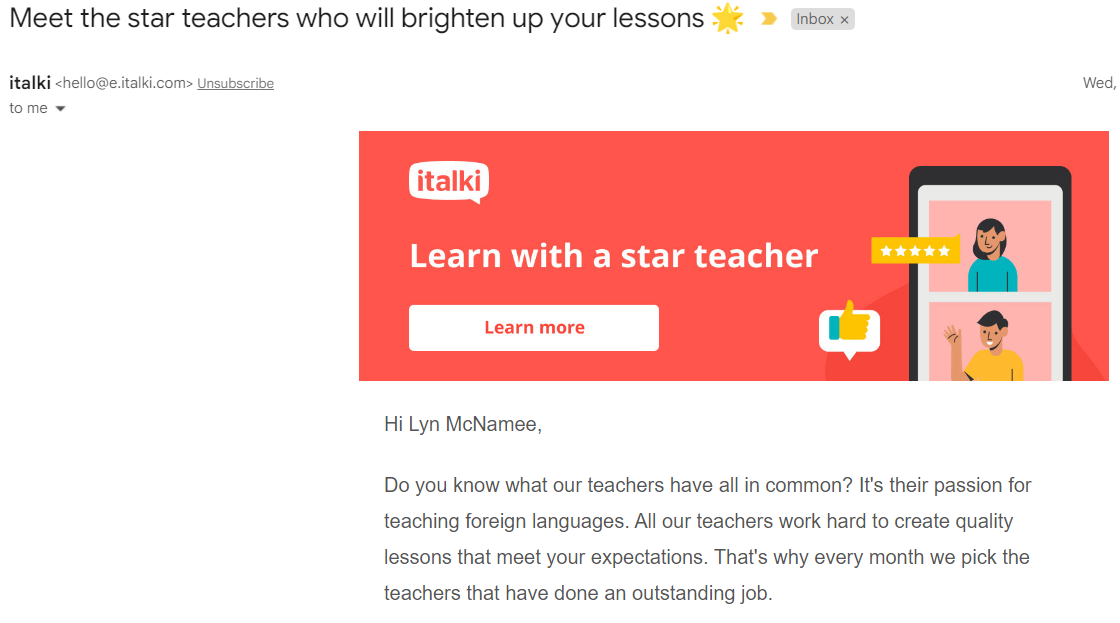
How do I stop people from unsubscribing?
Always send valuable content.
Double-check their permission by using a double opt-in form. Use welcome emails to orient people to your newsletter or other emails and ask questions to encourage them to respond and engage.
Clean your email lists every six months or quarterly to remove people who never open your emails. Removing them will automatically increase your open rate and cut costs if your ESP charges by list size.
Use personalized emails, segmentation, and A/B testing for subject lines, offers etc.
Allow people to manage their subscriptions (e.g., opt out of particular promotions but still receive your weekly newsletter.)
Final thoughts
Email marketing is likely to be more critical than ever in 2023. However, brands need a strategy that delivers timely, valuable content to all their subscribers.
That includes:
- Using all the data to understand your customers and set relevant goals
- Sticking to the rules
- Carefully considering the emails' visual appeal and relevance
- Including a call to action when relevant
- List segmentation to help ensure a good email open rate
Featuring in other industry newsletters is a growing email marketing trend. So, it's worth reaching out to those whose audience could be interested in your brand too.
Where will you find them? Join Reletter and discover more than one million newsletters on Substack and LinkedIn today. Get started for free.
